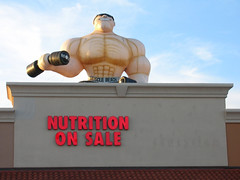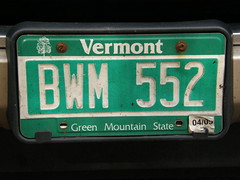Ruggero Da Ros wrote me recently with a link to his article, in Italian on airline food waste. Since he was kind enough to provide the translation, I thought I’d post it here. In addition to raising the interesting topic of airborne food waste, it’s a nice memento of the days when American airlines served food (for free).Â
 Ruggero’s piece raises a tough question–should food costs be included in ticket prices or charged onboard. It seems that the latter works better in terms of avoiding waste.Â
Ruggero’s piece raises a tough question–should food costs be included in ticket prices or charged onboard. It seems that the latter works better in terms of avoiding waste.Â
While selling food onboard leaves airlines with no way of knowing how many meals they’ll need, from what I’ve seen, they’re happy to err on the side of running out–a true rarity in food service!
So think of that argument, and Ruggero’s piece, the next time you start to grouse about how planes are nickel and diming us…I know I will. (Or at least focus on the checked bag fees, instead.)
Â
WASTING FOOD AND PLASTICS ON AIRLINES
Vacations are over. Many of us have been travelling by air to distant places. Have you ever noticed how much food is wasted? On the flights that are not low cost and that last more than an hour, a meal and a snack are served on trays in various plastic containers wrapped with plastic film. Hardly anybody refuses them. Some might not be hungry or have no intention to eat them, nonetheless they accept them hoping to find something to their taste or because it is included in the ticket fare.
A lot of people open the wrapping, smell the food or taste just a little bit of it, others eat something, only a few of them eat everything. On long distance flights almost two complete meals are served, one just after taking off and the other before landing.
Is all this food really necessary? In the low cost flights the food is paid apart from the travel fare and few people buy it, yet these companies are successful. We might then wonder why the other airline companies don’t give the opportunity to choose between a fare with meals and one without, and with a lower price? Doing so the exaggerated use of plastic containers and wrapping would be reduced, the cost of the airline tickets would also be reduced and, above all, the waste of enormous quantities of food would thus be avoided.
Let’s consider two calculations. On an intercontinental flight with 300 people 600 meals are served and, if they were to be paid, one can consider that at least 400 meals and 80 kg of plastic would be saved. In Europe only, around 800 million passengers fly every year; supposing that only one meal every 10 travellers could be saved, it would add up to the enormous figure of 80 million wasted meals. This would be enough to feed over 200,000 inhabitants of the poorer countries for a year and this figure would become millions if we extended this calculation to the whole world.
Considering that the aeroplane remains the most polluting transport means, indeed a trip between Europe and America of two people contributes, as far as gas and electricity consumption is concerned, to the same consumption as an average family in one whole year, thus let’s avoid wasting if we really cannot avoid flying.
18 September 2009
Ruggero Da Ros
Vittorio Veneto – Italy
 The preparations for this day have been rather feverish, recently, and it seems like the city is ready. The question is: are its citizens?
The preparations for this day have been rather feverish, recently, and it seems like the city is ready. The question is: are its citizens? I’m curious to see how they fare with plate waste. I’ll be keeping my eyes peeled.
I’m curious to see how they fare with plate waste. I’ll be keeping my eyes peeled.
 Despite speculation from
Despite speculation from  Some folks in Vermont are hoping to show why it’s called the Green Mountain State, as they’reÂ
Some folks in Vermont are hoping to show why it’s called the Green Mountain State, as they’re  Ruggero’s piece raises a tough question–should food costs be included in ticket prices or charged onboard. It seems that the latter works better in terms of avoiding waste.Â
Ruggero’s piece raises a tough question–should food costs be included in ticket prices or charged onboard. It seems that the latter works better in terms of avoiding waste.  Not surprisingly, I don’t love a food fight (in theory or in practice). While I try to have a sense of humor to food waste, I just don’t see the point here.
Not surprisingly, I don’t love a food fight (in theory or in practice). While I try to have a sense of humor to food waste, I just don’t see the point here.